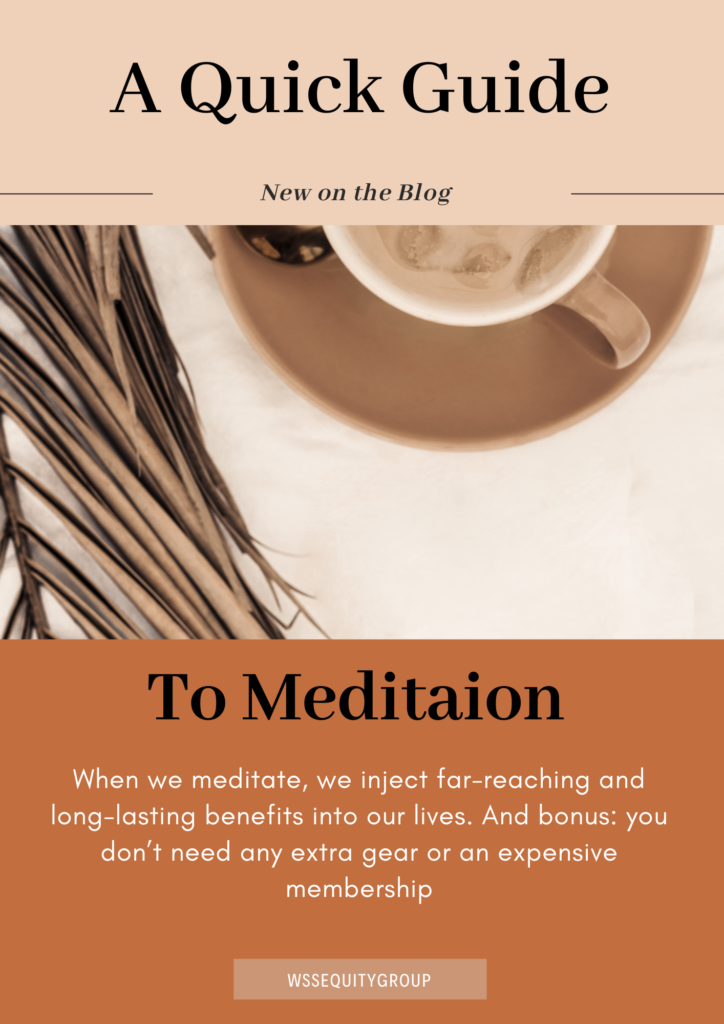
Meditation is something that all of us can benefit from. And in today’s hectic and busy world, there has never been a more important time for us to give it a go. Unfortunately though, a lot of people don’t really understand what meditation is or how to use it. And many people even find themselves with some kind of prejudice against meditation – assuming that it’s only for people who want to ‘achieve enlightenment’ or that it’s a purely spiritual or religious practice. To learn more on the subject, continue reading for a quick guide to meditation.
What is Meditation?
In fact though, meditation doesn’t have to be about either of those things. Instead, meditation is primarily just the practice of focusing your mind and paying attention. Think of it like weight lifting but for your brain.
There are different types of meditation and these have different end goals. However, the main objective in any case involves focusing your thoughts and choosing what you want to focus on and what you’re going to think. Instead of letting your mind run away with you as you worry about things you can’t change or feel generally stressed, meditation teaches you how to focus on the things that make you happy and how to shut out the things that don’t help.
Types of Meditation
Perhaps the best way to demonstrate this is to introduce some meditation techniques.
One is ‘mindfulness’. Here, the objective is not to stop yourself from thinking but rather just to detach yourself from your thoughts and to become almost like a third party observing those thoughts. The expression often used is that you’re going to watch them ‘drift by like clouds’.
The value in this is that you can prevent your thoughts from controlling your emotions. When you’re scared of heights, you can stop worrying about falling and instead just note that you’re having that thought in a detached manner. Mindfulness is also used by psychologists to help people better understand the contents of their own minds.
Another type of meditation is ‘transcendental’. This is the type that most people are most familiar with and that involves trying to ‘shut out’ your outside thoughts. Instead you’re trying to make your mind completely quiet and often this involves a mantra – a phrase that you repeat over and over.
Eventually, you can use this type of meditation to stop all and any stress: just quiet your brain for a moment of peace and relaxation!
Benefits Associated with Meditation
While meditation isn’t a cure-all, it can certainly provide some much-needed space in your life. Sometimes, that’s all we need to make better choices for ourselves, our families, and our communities. And the most important tools you can bring with you to your meditation practice are a little patience, some kindness for yourself, and a comfortable place to sit.
When we meditate, we inject far-reaching and long-lasting benefits into our lives. And bonus: you don’t need any extra gear or an expensive membership.
Here are five reasons to meditate:
- Understanding your pain
- Lower your stress
- Connect better
- Improve focus
- Reduce brain chatter
How to Meditate
Meditation is something everyone can do. Here’s how:
Meditation is simpler (and harder) than most people think. Read these steps, make sure you’re somewhere where you can relax into this process, set a timer, and give it a shot:
1) Take a seat
Find place to sit that feels calm and quiet to you.
2) Set a time limit
If you’re just beginning, it can help to choose a short time, such as five or 10 minutes.
3) Notice your body
You can sit in a chair with your feet on the floor, you can sit loosely cross-legged, you can kneel—all are fine. Just make sure you are stable and in a position you can stay in for a while.
4) Feel your breath
Follow the sensation of your breath as it goes in and as it goes out.
5) Notice when your mind has wandered
Inevitably, your attention will leave the breath and wander to other places. When you get around to noticing that your mind has wandered—in a few seconds, a minute, five minutes—simply return your attention to the breath.
6) Be kind to your wandering mind
Don’t judge yourself or obsess over the content of the thoughts you find yourself lost in. Just come back.
7) Close with kindness
When you’re ready, gently lift your gaze (if your eyes are closed, open them). Take a moment and notice any sounds in the environment. Notice how your body feels right now. Notice your thoughts and emotions.
That’s it! That’s the practice. You focus your attention, your mind wanders, you bring it back, and you try to do it as kindly as possible (as many times as you need to).
Related Post: Powerful Signs to Change Your Mindset
Bottom Line
Meditation is no more complicated than what we’ve described above. It is that simple … and that challenging. It’s also powerful and worth it. The key is to commit to sit every day, even if it’s for five minutes and just be still.
Go ahead and give meditation and try and let us know your thoughts on the subject.
Share your comments below!
Related article: mindful.org
Cheers!
P.S. What would you give to be happier?
Would you like to learn more about creating a more minimalist lifestyle? Grab access to our eBook, Scaling Back, where you will learn to de-clutter your life and create a more meaningful one? Check it out here.







